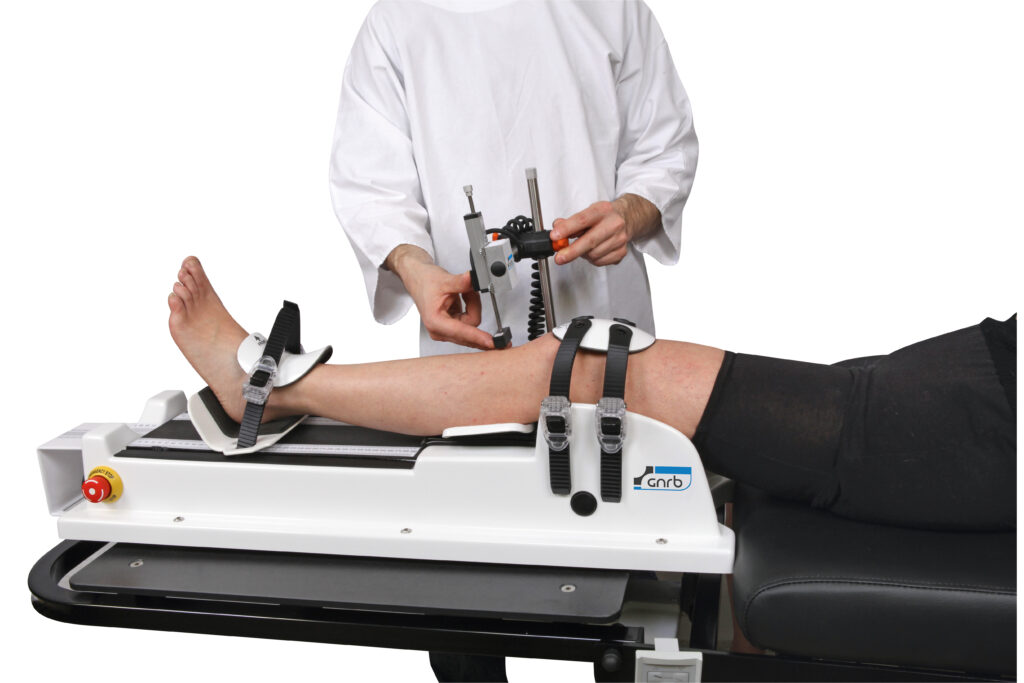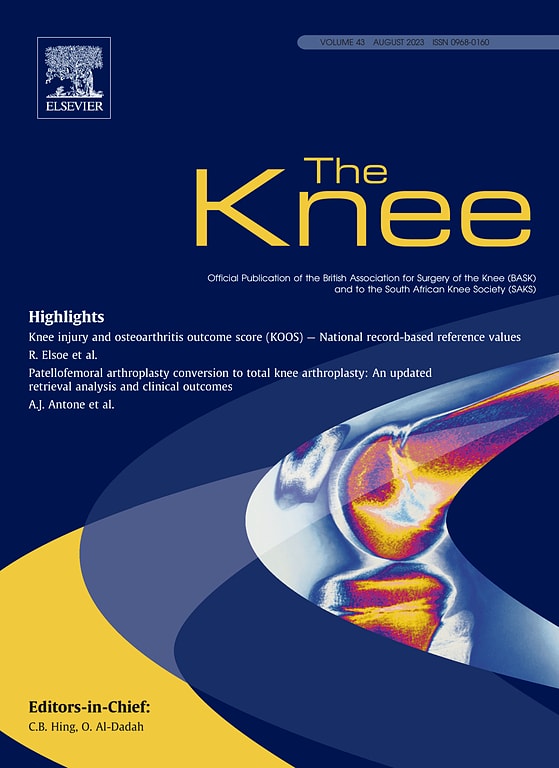In a groundbreaking study recently published in The Knee, researchers Djaffar Mouhli, Théo Cojean, Sébastien Lustig, and Elvire Servien have provided new insights into the complex relationship between Hamstring Stiffness & Anterior tibial translation (ATT) in patients with anterior cruciate ligament (ACL) ruptures. Utilizing the state-of-the-art GNRB® dynamic knee laxity arthrometer, this study sets a new precedent in understanding the biomechanics of knee injuries, potentially revolutionizing diagnostic approaches and rehabilitation strategies.
Level of evidence: Prospective study, level of evidence IV.
I. The Study's Core: A Closer Look at Hamstring Stiffness & Anterior tibial translation
The ACL plays a critical role in stabilizing the knee by preventing excessive forward movement of the tibia relative to the femur. Injuries to the ACL are common among athletes and can lead to significant downtime and the risk of long-term joint issues. Traditional diagnostic methods like the Lachman-Trillat test are effective but have limitations, especially in patients with varying hamstring stiffness.
In this prospective study, 52 patients with confirmed unilateral complete ACL rupture underwent comprehensive testing to explore the correlation between hamstring stiffness and ATT. The GNRB® arthrometer, known for its precision in measuring knee laxity, was pivotal in quantifying ATT, while isokinetic dynamometry assessed hamstring stiffness.
II. Findings: Unveiling the Relationship
Contrary to the initial hypothesis, the study revealed no significant correlation between hamstring stiffness and the difference in ATT between the injured and uninjured knee. This finding is critical, suggesting that the clinical reliability of the Lachman-Trillat test and similar diagnostics may not be significantly impacted by hamstring stiffness, as previously thought.
Moreover, the study delves into the nuances of ACL injuries, shedding light on the complex interplay of factors affecting knee stability and function post-injury. The use of the GNRB®® arthrometer not only underscored its diagnostic accuracy but also highlighted its potential in refining our understanding of knee mechanics in the context of ACL injuries.
III. Implications: Beyond the Findings
The implications of this study extend far beyond the technical findings. For clinicians, it reinforces the utility of dynamic knee laxity arthrometers like the DYNEELAX® and GNRB® in diagnosing and managing ACL injuries, providing a more nuanced understanding of individual patient conditions. Patients stand to benefit from more personalized treatment plans that consider the specific biomechanics of their injuries.
For the broader medical community and sports professionals, these findings encourage further exploration into the factors influencing knee stability post-ACL rupture. It prompts a reevaluation of existing rehabilitation protocols and opens new avenues for research into injury prevention and recovery strategies.

IV. The Path Forward: A Call to Action
This study is a testament to the relentless pursuit of excellence in sports medicine and orthopedic research. It challenges existing paradigms and invites the medical community to explore the depths of knee injury mechanics with advanced diagnostic tools like the DYNEELAX® and GNRB® arthrometers.
As we move forward, it is crucial to continue this journey of discovery. Further research, particularly studies with larger patient cohorts and diverse injury profiles, will be essential in unraveling the intricate dynamics of knee injuries. The ultimate goal remains clear: to enhance patient outcomes through innovative diagnostic and therapeutic approaches.
Conclusion: A Milestone in Knee Injury Research
The research conducted by Mouhli, Cojean, Lustig, and Servien represents a significant milestone in our understanding of ACL injuries. By leveraging advanced diagnostic tools like the GNRB® arthrometer, the study provides invaluable insights into the factors influencing knee stability post-injury. It marks a step forward in our collective effort to improve the diagnosis, treatment, and prevention of knee injuries, reaffirming the critical role of technology and innovation in advancing patient care.
As we share these findings with our community at Arthrometer.com, we remain committed to fostering a culture of innovation and excellence in orthopedic research and clinical practice. Together, we can redefine the future of sports medicine and orthopedic care, ensuring better outcomes for patients worldwide.
Medical Reference
- Mouhli, D., Cojean, T., Lustig, S., & Servien, E. (2024). Influence of hamstring stiffness on anterior tibial translation after anterior cruciate ligament rupture. The Knee, 47, 121-128. DOI: 10.1016/j.knee.2024.02.002







